 English
English 
more 

 English
English 
Views: 0 Author: Site Editor Publish Time: 2025-06-24 Origin: Site







Introduction
In temperate and arctic environments, petroleum products and bio-fuels must remain pumpable and filterable at low temperatures. The Pour Point and Cold Filter Point Tester from Changsha Friend Experimental Analysis Instrument Co., Ltd. delivers standardized measurements of pour point and cold filter plugging point (CFPP), helping fuel suppliers and end users ensure reliable fuel delivery in sub-zero conditions.
Testing Principles
Pour Point (ASTM D97)
A fuel sample in a standardized cup is cooled at a controlled rate (typically 3 °C/h). At each 3 °C interval, the cup is tilted; the lowest temperature at which the fuel still flows is recorded as the pour point.
Cold Filter Plugging Point (ASTM D6371)
The sample is cooled at a defined rate (1.5 °C/min) and then drawn through a 45 µm filter under vacuum. The CFPP is the lowest temperature at which the fuel passes through the filter within 60 seconds.
Key Design Features
Dual-Zone Refrigeration Bath
Maintains stable cooling down to –60 °C with ±0.2 °C accuracy.
Automated Tilt Mechanism
Precisely angles the pour-point cup at each temperature step, eliminating operator variability.
Integrated Filtration Cell
Applies vacuum and times passage automatically for CFPP determination.
Optical Flow Detection
A camera and image-analysis software can detect initial flow, offering an alternative to visual observation.
Protocol Flexibility
Users can adjust cooling rates, hold times, and filter pore sizes to comply with regional variations or experimental needs.
Industry Applications
Fuel Distributors: Certify diesel and heating oils for winter-grade specifications.
Power Plants: Ensure generator-set fuels flow reliably in cold-start scenarios.
Lubricant Producers: Optimize pour-point depressant additives for low-temperature performance.
Maritime & Offshore: Qualify marine fuels for polar operations.
Best Practices
Sample Filtration
Pre-filter through 2 µm filters to remove crystallized wax or debris.
Instrument Calibration
Use certified reference oils (e.g., n-paraffin mixtures) to verify temperature accuracy and flow-detection sensitivity.
Bath Maintenance
Replace refrigerant or Peltier bath fluid per schedule to sustain cooling performance.
Data Logging
Record both manual and automated readings to validate detection methods.
By integrating this Pour Point and Cold Filter Point Tester, users can select and blend fuels that maintain fluidity and filterability under extreme cold, safeguarding equipment start-up and operation.
Auto Lubricating Oil HTHS Dynamic Viscosity Tester Manufacturer
Apparent Viscosity Analyzer at High Temperature And High Shear Rate
High Temperature Foaming Characteristics of Lubricating Oils Tester
Foaming Characteristics of Lubricating Oils Tester Manufacturer
Lubricating Oils Foaming Characteristics Tester Manufacturer
Water Separability of Petroleum Oils And Synthetic Fluids Tester
Evaluating Wear Resistance with The Lubricant Anti‑Wear Performance Tester
Quantifying Volatility with The Lubricating Oil Evaporation Loss Tester
China Fretting Wear Protection by Lubricating Greases Tester
Characterizing Foam Behavior with the Lubricating Oils Foaming Characteristics Tester
Determining Flammability with The Automatic Open Cup Flash Point Tester
